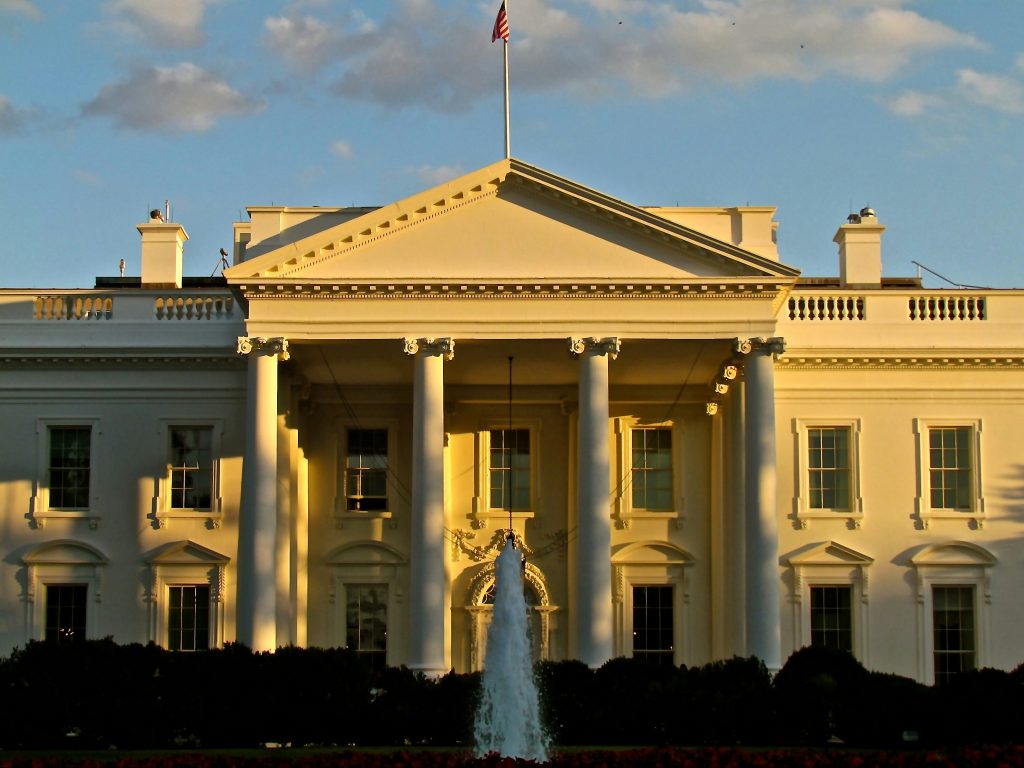Sustainability-Linked Bonds and What Do PCC’s and PKN Orlen’s Missed Targets Mean?

By: Tubah Ahmad*
Sustainability-linked bonds (SLBs) have recently gained popularity as companies increasingly seek opportunities to grow while aligning their values with Environmental, Social, and Governance (ESG) goals. Unlike green bonds[1], which earmark funds for specific sustainability-related projects, SLBs are a unique financial tool that may be used for general corporate matters.[2] This flexible use of funds encourages participation from corporate issuers operating in resource-intensive industries like cement and aluminum,[3] who might face challenges accessing the green bond market but have an overarching ESG strategy they hope to accomplish.
Instead of earmarking funds for specific projects, SLBs are linked to the performance of specific key performance indicators (KPIs) aimed at achieving predefined sustainability performance targets (SPTs).[4] Under this approach, companies commit to reaching specific sustainability goals within a defined timeframe.[5] If they don’t hit these targets, the interest rate they pay on their bonds—referred to as the coupon—increases.[6] This system directly ties financial consequences to sustainability performance, incentivizing companies in the sector to meet their environmental and social objectives.
However, several companies, such as Public Power Corporation (PPC) in Greece and Polski Koncern Naftowy Orlen (PKN Orlen) in Poland, have missed their targets, casting a spotlight on the need for a closer examination of the credibility and effectiveness of sustainability-linked bonds.
Most SLB observation dates are scheduled to occur in 2025, but five SLBs had an observation date at the end of 2022 and another 15 have observation dates in 2023.[7] PPC was the first index-eligible SLB to miss its sustainability target when it failed to meet its own target of a 40% reduction in Scope 1[8] CO2 emissions by the end of 2022.[9] The company attributed its failure to hit its target due to increased lignite generation to ensure Greece’s energy security during the crisis.[10] PPC has a second SLB that is tied to a target of a 57% reduction in Scope 1 CO2 emissions by the end of 2023, which the company is also likely to miss.[11]
Similarly, PKN Orlen also failed to meet its target, and it was the first issuer to pay a penalty after a decrease in its ESG score triggered a coupon step-up.[12] While most SLB issuers link their targets to reduced emissions or water usage, PKN Orlen linked its target to its MSCI ESG rating, which experienced a drop.[13] MSCI Research said that PKN Orlen’s rating was reduced due to an assessment finding that its “policies and programs to address business ethics and corruption appear weaker than peers in its sector.”[14]
Growing concerns regarding the potential for greenwashing and the sidelining of sustainability by some companies raise questions about the SLB market. It appears that several issuers could miss their ESG targets and incur coupon step-ups on their bonds. While this may raise discomfort for the companies paying for these step-ups, the coupon step-up is unlikely to make a real difference to PKN Orlen’s finances and thus serves no actual consequence for failing to meet the company’s target.[15] On the other hand, Ulf Erlandsson, the CEO of the Anthropocene Fixed Income Institute, argues that bonds triggering step-ups signify that the instruments are working as intended and that this is bound to happen.[16]
There are major issues associated with having companies set their own targets.[17] Increasing an issuer’s focus on its sustainability targets by tying its achievement to financing costs can discourage that issuer from setting ambitious goals or focusing more on material KPIs that are more difficult to address.[18] This challenge is compounded by the absence of standardized criteria and targets in the ESG realm, as exemplified by UK retailer Tesco’s 2020 SLB issuance, where the company had already achieved 90% of the sustainability target at issuance.[19] These instances underscore the importance of investor vigilance and the need to supplement reliance on third-party sustainability assessors.[20] The presence of potential conflicts of interest and varying evaluation methodologies in this emerging ESG frontier can obscure assessments of an issuer’s true commitment and ESG performance.[21]
Several key improvements are crucial to enhance the effectiveness of SLBs. Firstly, issuers should set more ambitious yet attainable Sustainability Performance Targets (SPTs), linking them to established international standards such as the Feasibility-AmBitiousness (FAB) Matrix by the World Bank.[22] This helps ensure that targets are meaningful and realistic by considering historical precedents and projections.[23] By aligning with such standards, issuers can better assess the feasibility and ambitiousness of their targets, reducing the risk of greenwashing.[24]
Secondly, financial penalties for non-compliance with SPTs should be substantial enough to serve as a genuine incentive for issuers to meet their sustainability goals.[25] Thirdly, bond structures should be revised to minimize built-in loopholes that could undermine the purpose of SLBs.[26] About 25% of these bonds allow issuers to redeem them before incurring any penalties if they fail to meet predetermined ESG targets.[27] There have also been flexibility clauses that enable companies to adjust their ESG targets after issuing the bonds.[28] These weaknesses have drawn criticism from investors and eroded confidence in the SLB market.
Lastly, timely and transparent disclosure of performance data should be required to hold issuers accountable for their sustainability commitments.[29] With these adjustments, SLBs can evolve into powerful tools for driving real progress in the realm of ESG and sustainability.
* J.D. Candidate, Class of 2025, Sandra Day O’Connor College of Law at Arizona State University.
[1] Sarah Morgan et al., Why Sustainable Finance Is on the Rise, Lexis (Oct. 14, 2020) https://plus.lexis.com/api/permalink/6e16d2f4-3993-485c-8d69-cab84fbe432d/?context=1530671.
[2] Farmida Bi, et al., Sustainability-Linked Bonds, Norton Rose Fulbright (Aug. 2020) https://www.nortonrosefulbright.com/en-us/knowledge/publications/8a104da8/sustainability-linked-bonds#:~:text=a%20sustainability%20objective.-,What%20are%20Sustainability%2Dlinked%20Bonds%3F,corporate%20purposes%20or%20other%20purposes.
[3] Alan Meng, Sustainability-Linked Bonds: A Nascent Market That Is Gaining Traction, FTSE Russell (Aug. 3, 2023) https://www.ftserussell.com/blogs/sustainability-linked-bonds-nascent-market-gaining-traction
[4] Farmida Bi et al., Sustainability-Linked Bonds, Norton Rose Fulbright (Aug. 2020) https://www.nortonrosefulbright.com/en-us/knowledge/publications/8a104da8/sustainability-linked-bonds#:~:text=a%20sustainability%20objective.-,What%20are%20Sustainability%2Dlinked%20Bonds%3F,corporate%20purposes%20or%20other%20purposes.
[5] Id.
[6] Pilar Auguets, Impact of PPC’s Failure to Meet Sustainability-Linked Bond Targets Limited, Fitch Ratings (Mar. 16, 2023) https://www.fitchratings.com/research/corporate-finance/impact-of-ppcs-failure-to-meet-sustainability-linked-bond-targets-limited-16-03-2023.
[7] Tessa Walsh, Growing Pains for SLB Market as Coupon Step-Ups Loom, International Finance Review (Feb. 17, 2023) https://www.ifre.com/story/3755144/growing-pains-for-slb-market-as-coupon-step-ups-loom-b1t1y6vs5k.
[8] ORLEN Group Reveals Its Total Carbon Footprint, Fuels and Lubes (Jan. 3, 2023) https://www.fuelsandlubes.com/orlen-group-reveals-its-total-carbon-footprint/.
[9] Dominic Webb, Limited Fallout Forecast for Bondholders as First Index-Eligible SLB Misses Target, Responsible Investor(Mar. 22, 2023) https://www.responsible-investor.com/limited-fallout-forecast-for-bondholders-as-first-index-eligible-slb-misses-target/.
[10] Id.
[11] Id.
[12] Id.
[13] Greg Ritchie & Maciej Onoszko, ESG Downgrade Sparks New Penalty in $200 Billion Bond Market, Bloomberg (Nov. 29, 2022) https://www.bloomberg.com/news/articles/2022-11-29/esg-downgrade-sparks-rare-penalty-in-a-200-billion-bond-market.
[14] Id.
[15] Id.
[16] Tessa Walsh, Growing Pains for SLB Market as Coupon Step-Ups Loom, International Finance Review (Feb. 17, 2023) https://www.ifre.com/story/3755144/growing-pains-for-slb-market-as-coupon-step-ups-loom-b1t1y6vs5k.
[17] Rob Dwyer, Will Complacent SLB Structures Wreck the Market?, Euromoney (Sept. 20, 2023) https://www.euromoney.com/article/2c7rkaottc82iva2gh91d/esg/will-complacent-slb-structures-wreck-the-market.
[18] Id.
[19] Id.
[20] Id.
[21] Id.
[22] Dieter Wang et al., Ambitious, Yet Feasible: Setting FAB targets for Sustainable Financing Instruments, World Bank Blogs(July 20, 2023) https://blogs.worldbank.org/psd/ambitious-yet-feasible-setting-fab-targets-sustainable-financing-instruments.
[23] Id.
[24] Id.
[25] Id.
[26] Id.
[27] Bloomberg, ESG-Linked Bonds Add Clauses That Let Them Escape Financial Penalties, Investment News (July 3, 2023) https://www.investmentnews.com/esg-linked-bonds-add-clauses-that-let-them-escape-financial-penalties-239448.
[28] Id.
[29] Bruno Caron, The Pitfalls Associated with Sustainability-Linked Bonds, McMillan (Sept. 1, 2021) https://mcmillan.ca/insights/the-pitfalls-associated-with-sustainability-linked-bonds/#:~:text=In%20no%20particular%20order%20of,the%20KPIs%20during%20the%20term.


